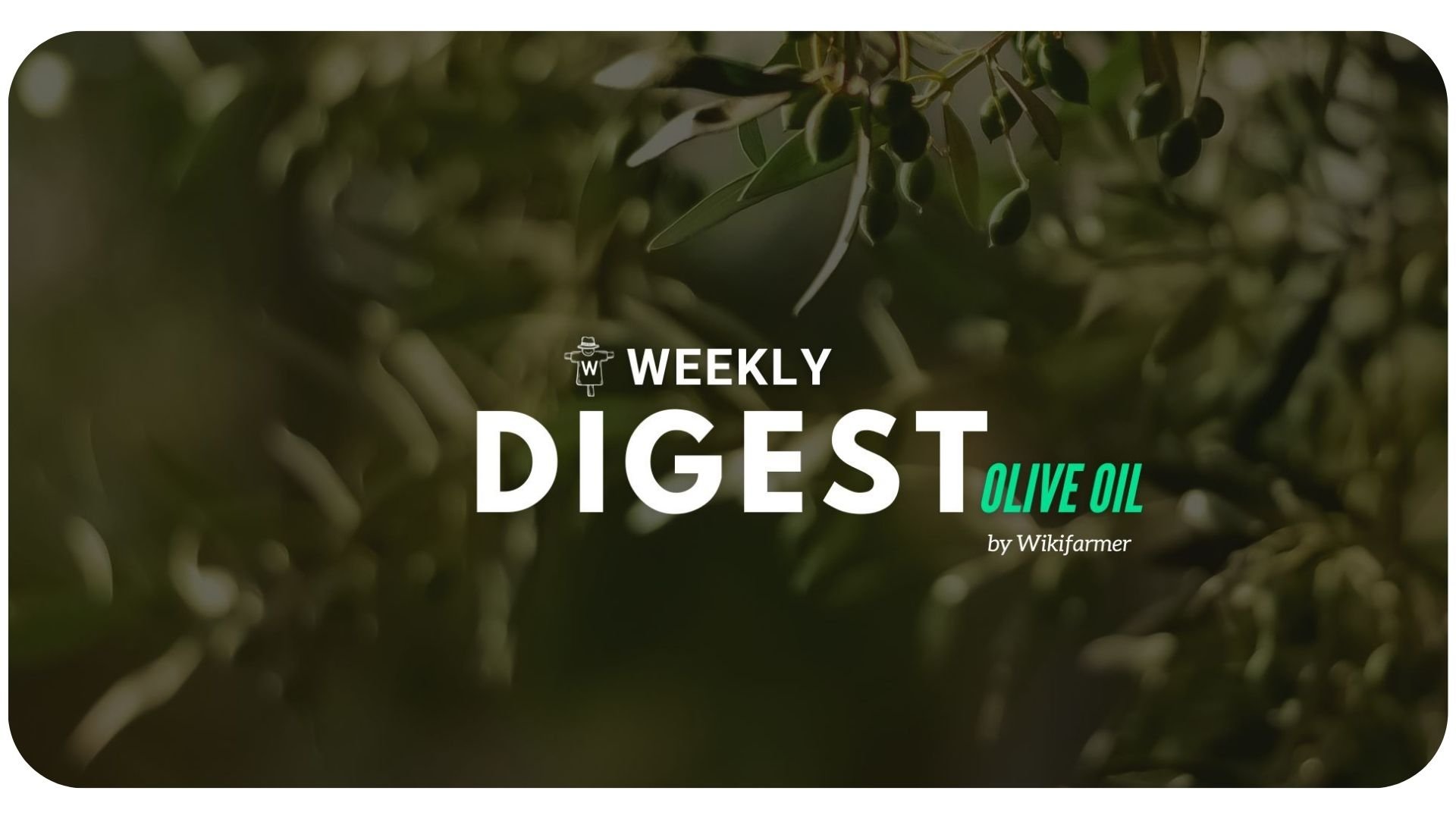Olive Oil Market Digest w18

Weekly Olive Oil Market Updates
Price Updates
This week, Wikifarmer Marketplace transactions have yielded valuable insights into olive oil markets across major Mediterranean countries. We've consolidated these insights into a table displaying mean prices, enriched by input from respected industry sources like the Union of Olive Oil-Producing Municipalities of Crete in Greece, PoolRed in Spain, and Ismea Mercati in Italy. Our collaborative effort aims to deliver a thorough and accurate portrayal of the current olive oil market landscape.
-png.png?width=757&height=470&name=0ZhfO-average-of-oil-mill-prices-evoo%20(6)-png.png)
Throughout this week, prices have maintained a consistent upward trajectory, showing steady progression. Olive trees are presently in the blooming phase and are benefiting from favorable weather conditions, which bode well for their healthy development and potentially signal a better crop for the coming year. The impending release of the AICA report by the end of next week adds an element of anticipation to market dynamics, possibly leading to shifts in trends. Total consumption levels, particularly for Extra Virgin Olive Oil (EVOO), will hold significant sway over prices, given the high consumption volumes observed in recent months. However, Virgin Olive Oil and Lampante are also facing some pressure, with concerns about potential shortages looming.
-png.png?width=754&height=468&name=PdLod-average-of-oil-mill-prices-virgin%20(5)-png.png)
-png.png?width=757&height=470&name=9VVjm-average-of-oil-mill-prices-lampante%20(4)-png.png)
In Greece, prices are mirroring Spain's trajectory, a trend possibly influenced by the Orthodox Easter this week, during which all transactions should be finalized. As previously noted, this year's production was severely restricted, resulting in high prices due to the limited volumes. Overall, the market remains exceptionally quiet, with minimal transactional activities taking place.
In Italy, prices continue to show a disparity compared to their Mediterranean counterparts. Despite limited availability, this year's crop was well managed, albeit at high prices that concern Italian consumers. Towards the end of April, temperatures were lower than usual, transitioning from almost summer-like conditions. Olive trees experienced a slight slowdown in vegetative activity, but encountered no significant issues overall. However, concerns arose in areas where inflorescences were well developed, yet temperatures remained above critical thresholds. With an expected increase in temperatures, close monitoring of olive tree health and development is essential, particularly regarding potential parasite attacks.
Olive Oil: The Liquid Gold
This year has been challenging in terms of pricing, with retail prices making olive oil one of the most impactful products during this period of inflation. Last year's drought resulted in a very disappointing crop for European Olive Oil, causing prices to rise. This shortage hasn't only affected Extra Virgin Olive Oil; there's also a scarcity of Virgin Olive Oil and Lampante. In Spain, particularly in Andalusia, olive oil is among the most stolen items in supermarkets, prompting surprising protective measures such as chaining and locking up the product to curb this criminal trend.
The surge in Olive oil prices has also impacted Italians, who have struggled to purchase the cornerstone of the Mediterranean Diet. According to a survey by NielsenIQ and Ismea, despite a considerable 44 percent price hike from 2022 to 2023, nearly half of Italian households have maintained their purchasing habits unchanged. However, 17 percent have reduced consumption, with 11 percent opting for lower-quality substitutes. This shift is attributed to inflation and decreased production. Italian families prioritize the price-quality ratio and actively seek discounts, with 47 percent favoring domestically produced olive oil. Protected designations of origin play a crucial role in consumer decisions, though efforts to engage customers directly persist, most still prefer purchasing from large retailers. Escalating food prices have prompted reductions in dining out, with perceptions that organic product prices are rising more than conventional ones. Despite signs of recovery in food sales, uncertainty looms over olive oil prices. Nonetheless, overall olive oil consumption in Italy has been steadily declining, compounded by factors like the impact of the Mediterranean megadrought on production.

High olive oil prices have prompted some consumers to consider alternative options, such as other vegetable oils like sunflower and rapeseed oil. These alternatives are appealing due to their availability, low prices, and neutral flavor, making them suitable substitutes for olive oil in both HORECA sector and domestic consumption. At Wikifarmer, we offer a range of options, including bottled and bulk vegetable oils, with our label for sunflower oil and high oleic sunflower oil, providing consumers with versatile and cost-effective alternatives to olive oil.
.jpg?upscale=true&width=500&upscale=true&name=Untitled%20(300%20x%20300%20px).jpg)
Wikifarmer negotiates with several suppliers to secure a steady supply of Olive oil at reasonable prices. Our team can help you with price negotiation, pay with credit terms, and arrange logistics and transportation. We also implement strict Quality Assurance procedures, making sure that producers provide us with all certificates that prove their claims about their products, and that all relevant analyses take place.
Our contribution is not constrained just to the facilitation of value optimization for the various market players. We also invest a lot in making sure that our highly-valued partners, either from the supply or from the demand side, keep up with the latest developments in their fields.
This is why we have created Wikifarmer Academy, in order to offer affordable educational courses to all. The Wikifarmer Academy is an online school that aims to provide complete educational courses that will empower you and help you cultivate more efficiently and sustainably. In case you are interested in learning more, check our new course "Wikifarmer Expert in Sustainable Olive Oil Production, Quality, and Economics" here.
.png?width=450&height=87&name=New%20Logo%20(1).png)
